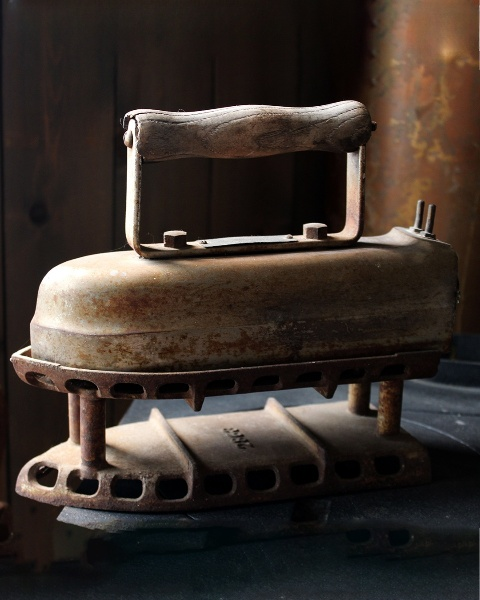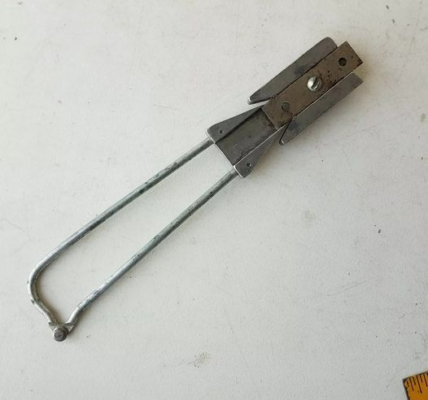When we think of groundbreaking scientific inventions, the smoothing iron may not immediately come to mind. However, this humble household appliance has a rich history that stretches back centuries, dating all the way to ancient Greece and Rome. Its evolution from a primitive tool to a modern marvel is a testament to human ingenuity and the desire to improve everyday life. While it may not have the fame of inventions like the wheel or the light bulb, the smoothing iron has played a vital role in shaping how we care for our clothing.
In this comprehensive exploration, we’ll uncover the captivating history and incredible transformations of the smoothing iron, illustrating how it has become an essential household tool across generations.
The Origins of the Smoothing Iron: From Ancient Greece to Rome

The earliest origins of the smoothing iron can be traced back to ancient Greece around 400 B.C. At the time, the Greeks used a tool known as a “goffering iron” to create pleats and folds in their robes. This bar-shaped device would be heated and then pressed against the fabric, marking the first step toward modern ironing.
Meanwhile, in ancient Rome, people used a flat metal paddle to smooth out wrinkles in their clothing by beating the paddle against the fabric. The early Chinese also employed a scoop-like iron that was heated with hot coals or sand and rubbed over garments to smooth them. These primitive methods laid the groundwork for the future development of the smoothing iron, though they were far from the convenient electric models we know today.
The Rise of the Flatiron: Europe in the 1300s
By the 1300s, the smoothing iron began to take a more recognizable form in Europe with the invention of the “flatiron.” This early iron was simply a flat piece of metal attached to a handle, heated over an open flame until it was hot enough to press clothes. To prevent scorch marks on delicate fabrics, users often placed a layer of cloth between the hot iron and the garment.
Over time, inventors sought ways to improve this basic design. The 1500s saw the introduction of the “box iron,” which featured a flat-bottomed box filled with hot coals or bricks. This design eliminated the need for a cloth barrier and made ironing more efficient, setting the stage for further advancements in smoothing iron technology.
The Transformation of the Smoothing Iron in the 19th Century

The 19th century brought significant improvements to the smoothing iron. The advent of cast iron stoves allowed for more efficient heating of flatirons, replacing the open flame and reducing the risk of burns. By the 1870s, irons with wooden handles became popular, as the wood stayed cool to the touch, preventing users from burning their hands.
Later in the 1800s, the invention of gas irons introduced an even more convenient option. These irons featured a built-in burner powered by a fuel line, making them lighter and easier to handle than previous models, which often weighed as much as 15 pounds. However, it was the introduction of the electric iron in the 1880s that truly revolutionized the process of ironing.
The Invention of the Electric Iron: A Game-Changer for Households
In 1882, Henry W. Seeley, a New York City inventor, received a patent for the first electric flatiron. This iron used built-in coils that heated the metal plate when plugged into a power source. Although the early electric irons had limitations, such as the need to be heated on a specialized rack, they marked the beginning of a new era in household appliances.
As the 20th century began, electric irons continued to evolve. By the early 1900s, the electric cord-powered iron became standard, eliminating the need for constant reheating. This innovation made the ironing process more efficient, and the addition of thermostats allowed users to better control the heat level, improving the overall user experience.
The Introduction of Steam Irons: A Major Breakthrough

The next major breakthrough came in the mid-1920s with the invention of the steam iron. The Eldec Company pioneered this design, which funneled water vapor from a small tank onto the sole plate of the iron, making it easier to smooth out wrinkles, especially on dry fabrics. This innovation dramatically changed how people approached ironing, reducing the effort required to achieve a crisp, polished look.
The steam iron quickly gained popularity, and manufacturers continued to refine the design, improving its functionality and making it a staple in households worldwide.
Modern-Day Advancements: Refining the Smoothing Iron
As the decades progressed, the smoothing iron underwent a series of refinements that made it more user-friendly and efficient. In the 1950s, aluminum sole plates were introduced, offering a lighter and rust-resistant alternative to the traditional cast iron. Later, the development of non-stick coatings helped prevent fabrics from sticking to the iron during use.
The introduction of cordless irons, improved steam regulation, and advanced temperature controls in recent years has continued to enhance the smoothing iron’s functionality, ensuring it remains a trusted tool for households everywhere.
The Future of the Smoothing Iron: Continued Innovation Ahead

While the basic function of the smoothing iron has remained the same—removing wrinkles from clothes—there is still room for innovation in this humble appliance. Future advancements may focus on improved sole plate materials that are more resistant to wear and tear or enhanced steam and temperature controls for even greater precision.
As technology continues to shape our lives, it’s likely that the smoothing iron will also see new developments, perhaps integrating smart technology to make the process of ironing even more convenient and efficient.
Conclusion: The Enduring Importance of the Smoothing Iron
From its ancient origins to its modern electric form, the smoothing iron has come a long way. This essential household tool has played a vital role in shaping how we care for our clothing, reflecting the ingenuity and problem-solving abilities of countless generations.
Though it may not have the same level of recognition as other inventions, the smoothing iron remains an indispensable part of daily life, helping people around the world present their clothes in their best condition. As we look toward the future, we can expect continued innovation in ironing technology, ensuring that this humble appliance continues to serve us for generations to come.
So, the next time you reach for your iron, take a moment to appreciate its rich history and the progress that has made it such a valuable tool in our homes.




